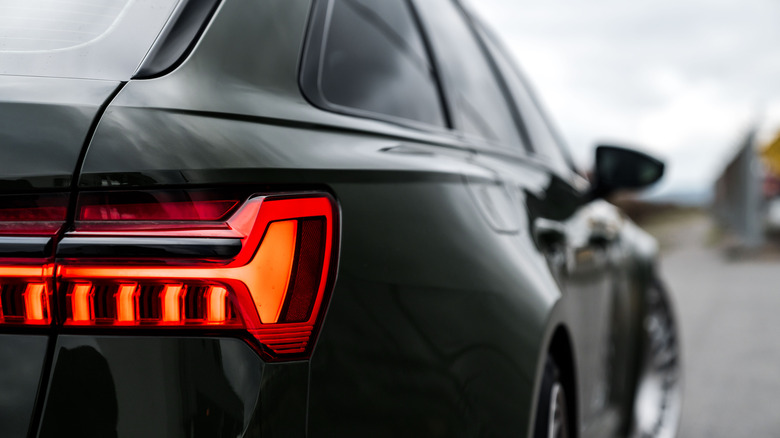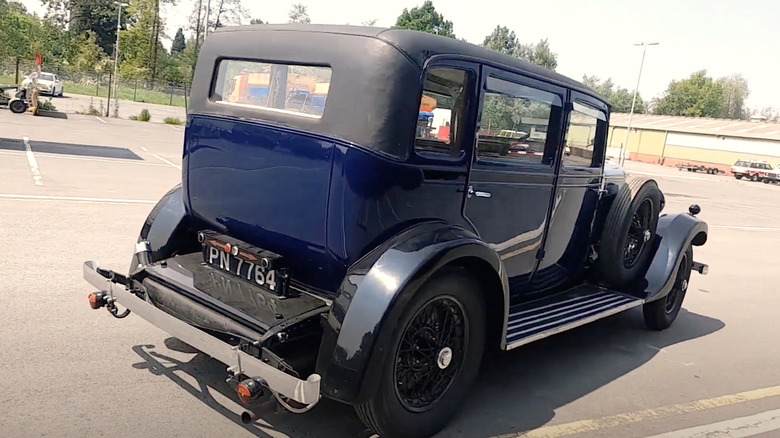When Were Turn Signals Invented And Which Was The First Car To Use Them?
In the century-plus since automobiles first hit the roadways, dozens of advancements have helped make vehicles safer for drivers. Seat belts, airbags, and anti-lock braking systems tend to headline most conversations concerning advancements in automotive history, while many modern safety features are far more technologically advanced. But among history's more overlooked safety features, turn signals undoubtedly rank pretty high on the list.
In the early days of the automobile, drivers were taught to alert other drivers of a turn by using hand signals. While the practice was effective enough, it was hardly ideal, as it relied heavily on drivers not only knowing and using the signals correctly on the road, but also recognizing them when trailing another vehicle. Needless to say, the hand signal approach could make navigating city streets a bit tricky, so a more elegant method was deemed necessary.
That method proved to be the turn signal, which initially found developers affixing small lights to the rear end of an automobile that could be engaged by the driver to signal their intent to turn right or left. The first versions of the distinctly noisy features were developed in the early 1900s. However, Oscar J. Simler is widely credited as the inventor of the turn signal, with the patent for his indicator filed in 1929. Even then, years would pass before turn signals were actually used on cars.
Talbot was the first automaker to offer turn signals as an option
There's been some debate over which automaker was the first to offer electric turn signals on their vehicles. While many credit American manufacturer Buick with the historically significant move, it was actually a British-French company that first utilized the feature on a production vehicle. That company went by the name of Talbot, and was founded in 1903 by Major Charles Chetwynd-Talbot, 20th Earl of Shrewsbury, and French entrepreneur Adolphe Clément-Bayard. But by the time a Talbot hit the streets with a functional turn signal in tow, it was owned by a French company, Darracq, which developed one of the era's Art Deco-inspired beauties known as the T150 C Teardrop Coupe.
Ownership changes aside, Talbots were cruising around town with front and rear turn signals in the early 1930s, and the lights were even seen on the 1931 AM 75. Some outlets, however, claim that the 1932 Talbot 105 was the first production vehicle to sport factory-installed turn signals. Whatever the case, it would seem that Talbot was a legit trailblazer in the use of electric turn signals with automobiles.
Circling back to the debate about Buick, it is, perhaps, worth noting that turn signals were only offered on those Talbots as optional add-ons. As it was, Buick was the first manufacturer to make turn signals a standard feature on an automobile, which is an important caveat in the history of its development. The American automaker made that move in 1939 when it fitted its Buick Eights with turn signals, which it officially dubbed "Flash Way Direction Signals" in its brochures.

